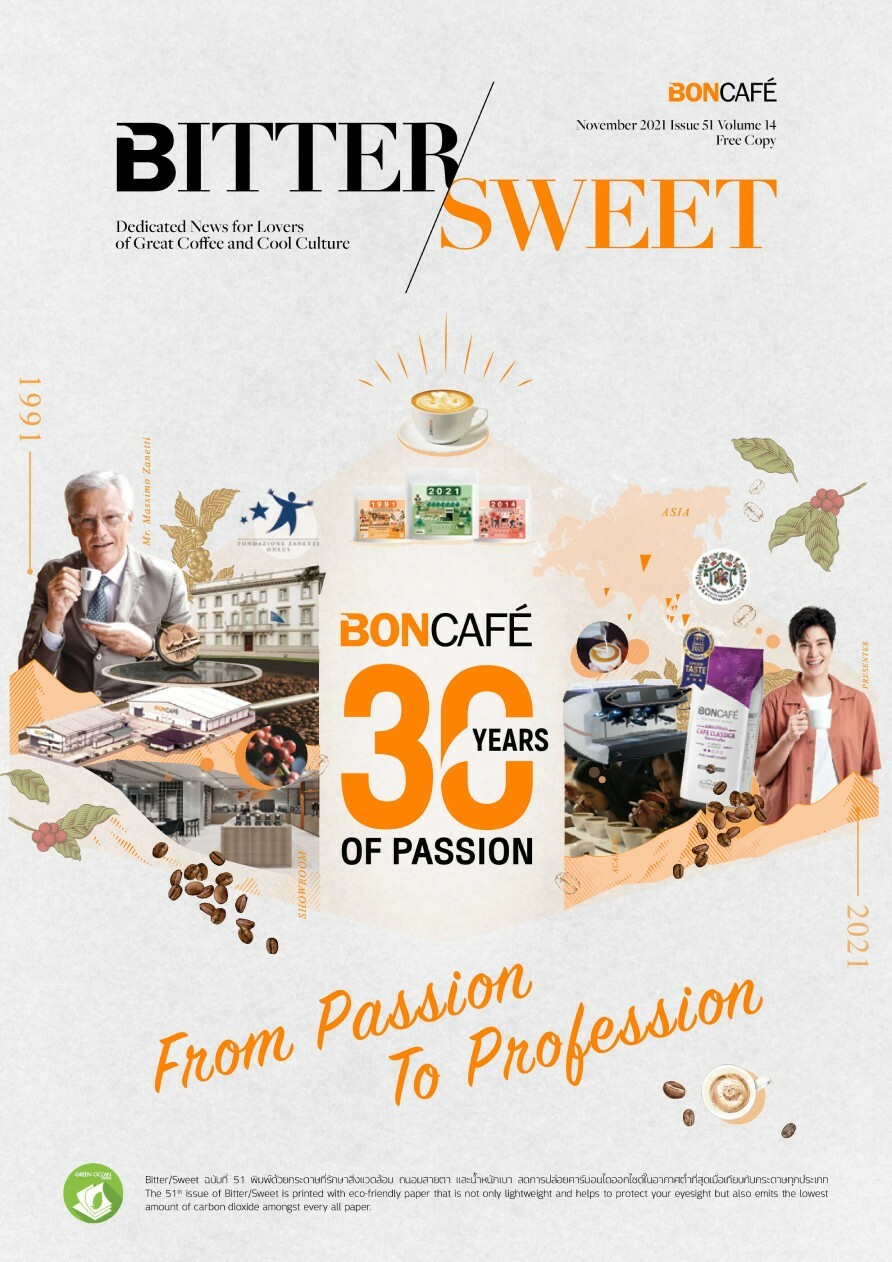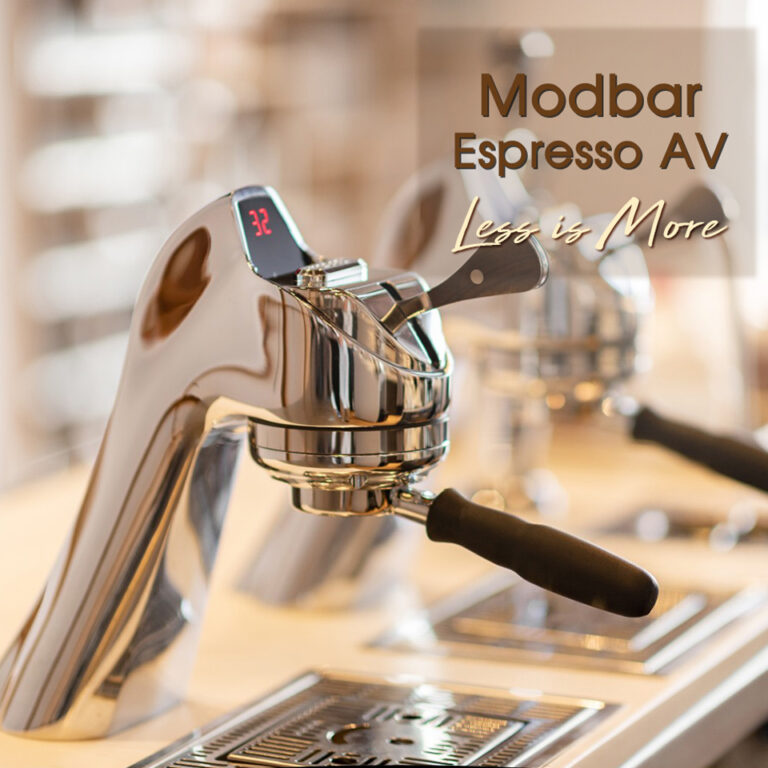
MODBAR ESPRESSO AV
Less is More เรียบง่าย แต่ได้มากกว่า
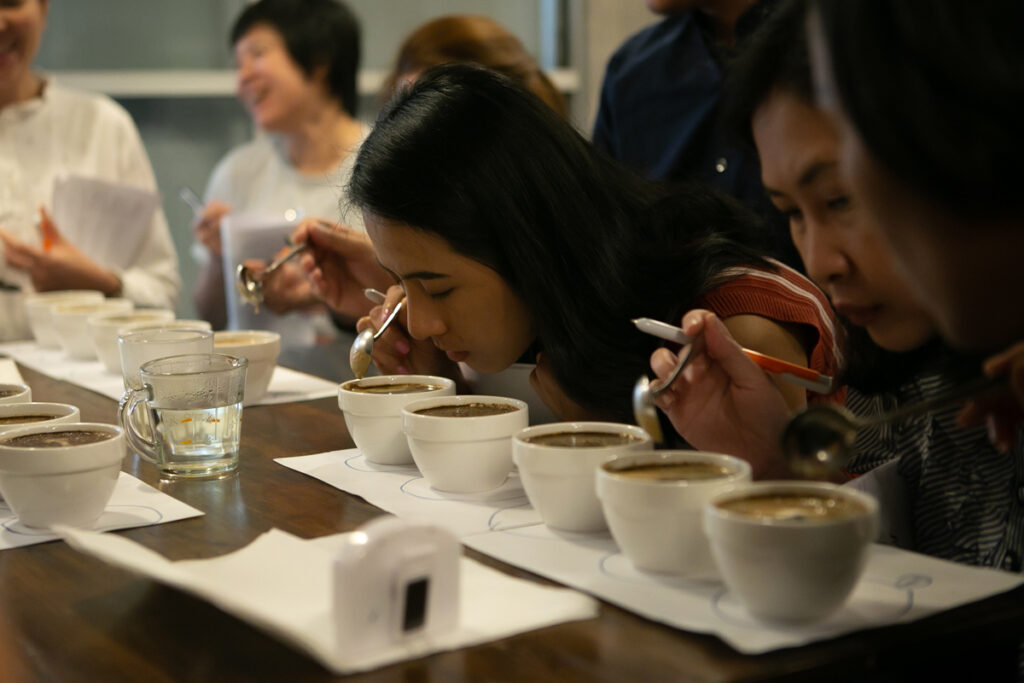
1. AROMA The first thing one must look for is the coffee’s aroma. From earthy, spicy, citrusy, nutty or floral, the aroma of the coffee often corresponds with the flavour of the coffee. One must study the fragrance, which refers to the smell of ground coffee prior to contact with hot water, and the aroma, which refers to ground coffee after water has been added. The reason is because sometimes dry coffee can have a strong fragrance which gets lost after water has been added. Smelling the coffee before and after it comes into contact with water is thus crucial.
2. ACIDITY The acidity indicates the sourness of the coffee. Specialty coffee often contains high acidity, as arabica coffee is unique with its acidic and refreshing qualities, though arabica with low acidity can produce a smooth, lingering flavour inside the mouth.
3. BODY When determining the body, look for the weight or the heaviness of the coffee on the tongue, and whether the flavour is light or filling for mouth. Coffee with light bodies carry a light note that does not linger long on the tongue. However, to prevent confusion between the body and the bitterness, a trick to keep in mind is that heavy bodied coffee is pleasing for the palate, but bitter coffee can be unappetizing due to its flavour.
4. FLAVOR When tasting specialty coffee, one would taste delicate flavours of other gourmand, such as chocolate, berries, spices, or even sweetness that resembles honey and caramel. This can be more visible in some coffee than another. By nature, the tongue is full of receptors. Thus, in order to discover the full flavour of the coffee, it is important to ‘slurp’ by drinking the coffee and taking in the air with one’s mouth. This will help the coffee particles to spread to every receptors, in turn helping the taste to better determine each flavour. Slurping is hence one of the first techniques to practice. A tip is to practice by slurping warm water from a spoon.


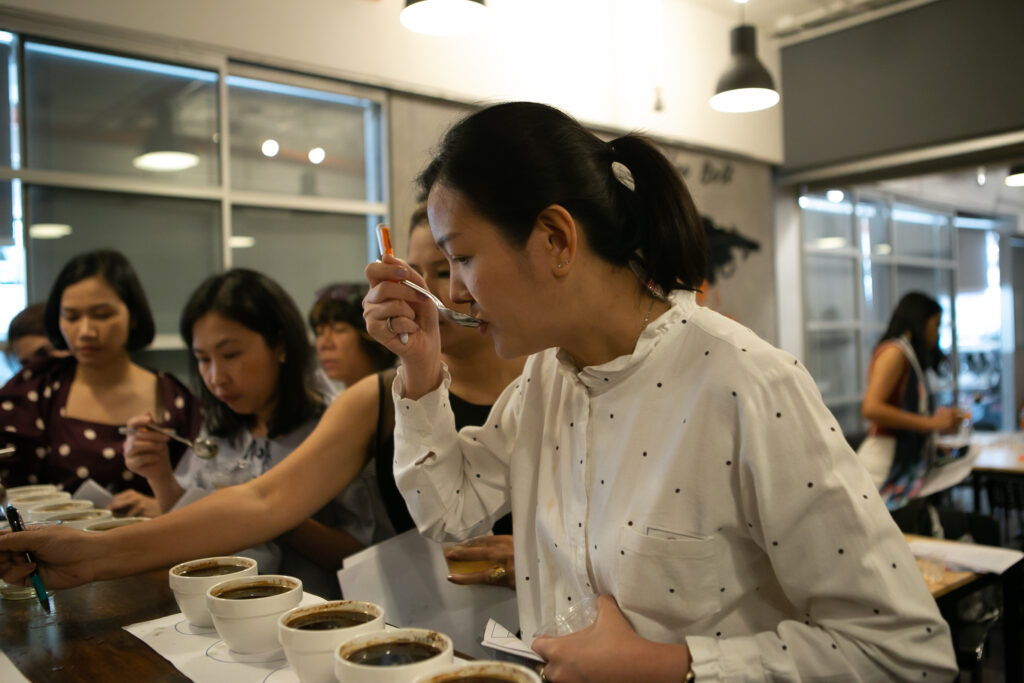
1. Avoid wearing perfume, which can interfere with the sense of smell, along with avoiding food with strong flavours prior to cupping.
2. The cupping table should be 120 – 140 cm in height and approximately 60 cm in width for Asian people. This will allow the individual to bend down and smell the coffee without touching the cup.
3. There should be 5 lidded cups per each coffee sample.
4. Each grader should have their own spoons, along with an empty cup in the case they do not wish to swallow.
5. During the cupping process, it is important to always clean and dry the spoon between each cup, as well as drinking water before tasting the next cup.
6. Talking is prohibited as this can interrupt the concentration of other graders. Expressing one’s opinions is also prohibited.
7. Do take notes of the flavour and aroma. However, for a novice, if in doubt, write down what you can detect e.g. a floral or spicy smell, a fruity sourness, or make comparisons to things that can be found in Thailand such as mulberries, lime, oranges instead.
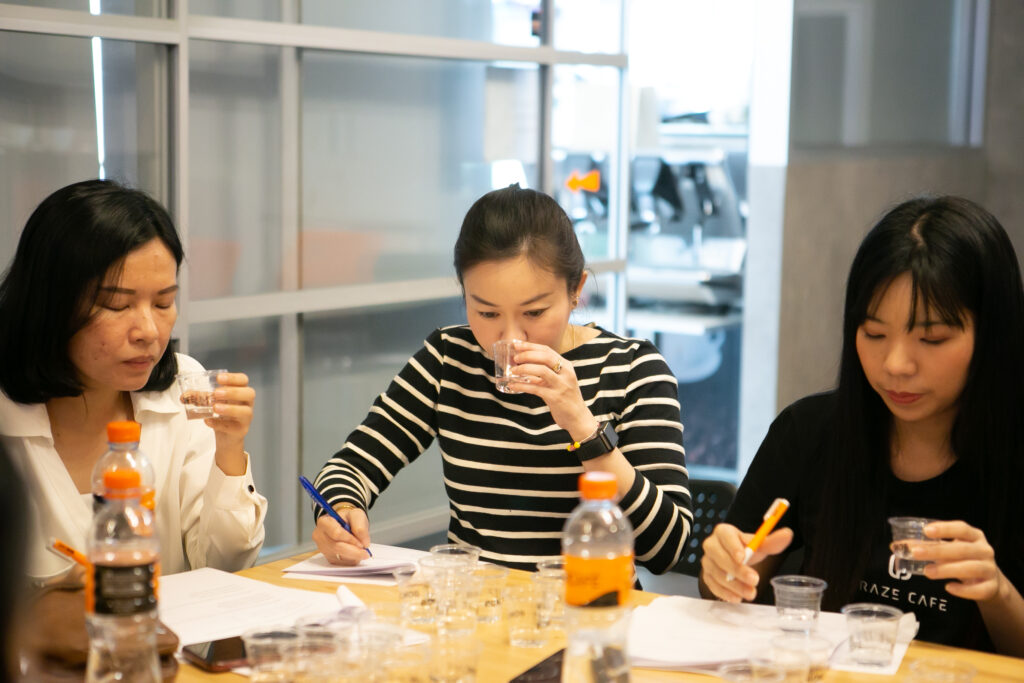
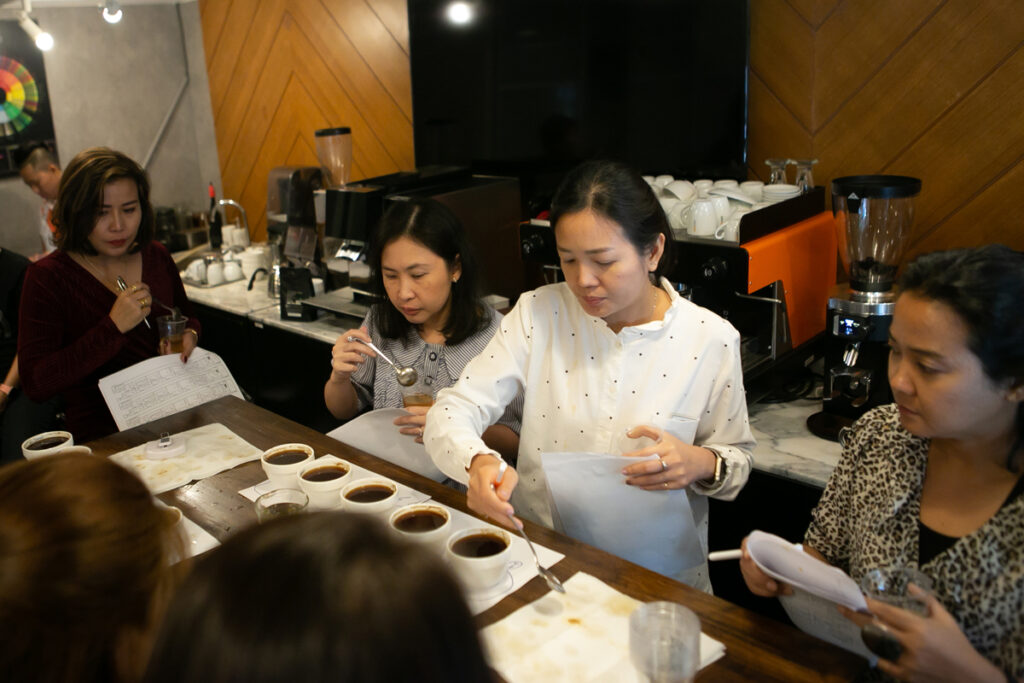
Practice makes perfect, and a regular cupping session at home will help to hone your skills. This does not only apply to coffee, as you can try this with other food or drinks. However, those looking for a proper cupping course, Boncafé (Thailand) Ltd. also provides a special course. Simply visit www.boncafe.co.th or www.facebook.com/boncafethailand for more information.
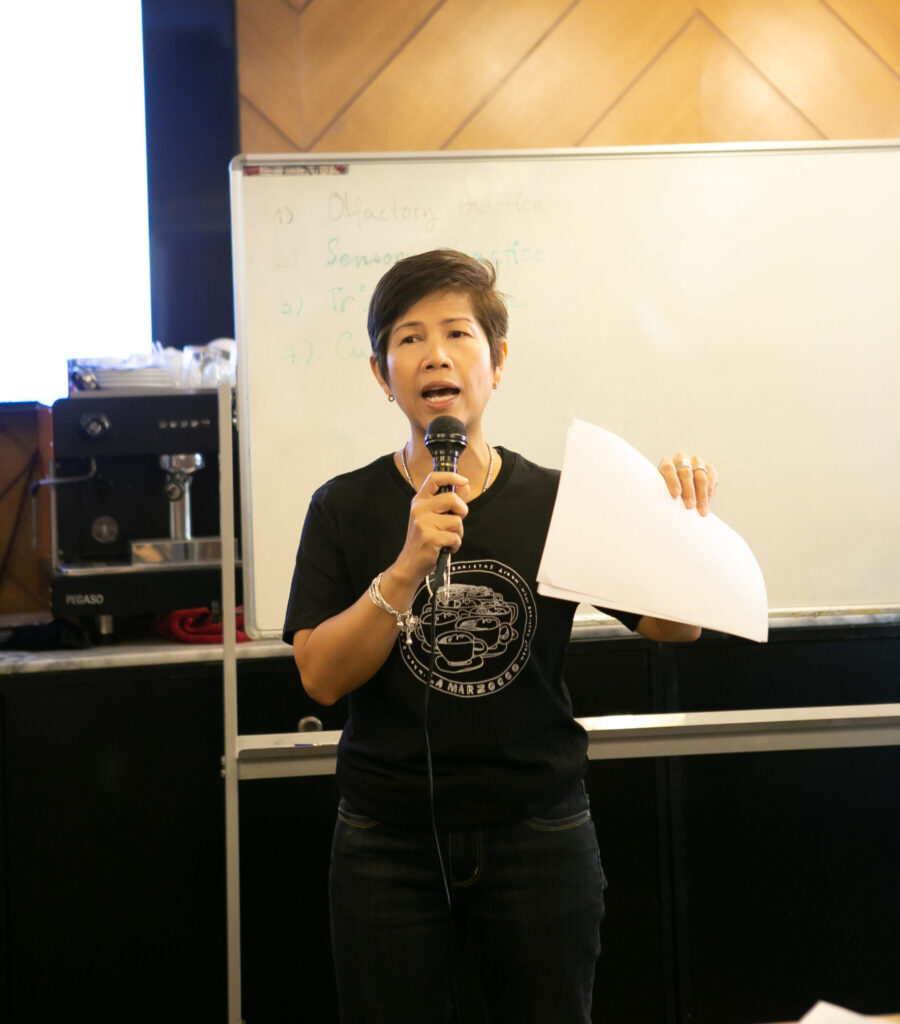
Less is More เรียบง่าย แต่ได้มากกว่า
The Secrets of popular Japanese beverage “Matcha” that you show know before drinking This is what you should know about “Matcha” drinks. Today we’re going to introduce you to the famous Japanese beverage in more details which will make you unconsciously fall in love ! What is Matcha ? The difference between “Matcha” and usual […]
Specialty Coffee Cupping Class Firstly, one must study the organ with which we use to detect the taste modalities. The tongue is an important organ with many receptors, or taste buds, located on four different parts of the tongue: the tip and the sides of the tongue are used to taste saltiness, the tip and […]
Cafflano Kompresso : Espresso On The Go For some, getting a good rest means reconnecting with nature, be it mountains or the beach. However, being close to nature sometimes means compromising many indulgences, especially when it comes to those who need a good shot of espresso in the morning to function fully. In this issue […]
